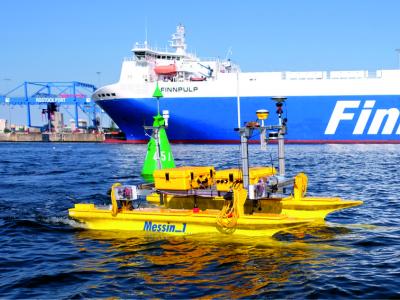Supervised Learning
A commonly used definition of spatial disorientation (SD) in aviation is "an erroneous sense of one’s position and motion relative to the plane of the earth’s surface". There exists a wide range of SD use-cases dictated by situational factors, therefore SD has been predominantly studied using reduced motion detection experimental contexts in isolation. The study of SD by use-case makes it difficult to understand general SD occurrence and thus provide viable solutions. To investigate SD in a generalized manner, a two-part Human Activity Recognition (HAR) study was performed.
- Categories:
 314 Views
314 ViewsThe design and implementation of an anthropomorphic robotic hand control system for the Bioengineering and Neuroimaging Laboratory LNB of the ESPOL were elaborated. The myoelectric signals were obtained using a bioelectric data acquisition board (CYTON BOARD) using six channels out of 8 available, which had an amplitude of 200 [uV] at a sampling frequency of 250 [Hz].
- Categories:
 1877 Views
1877 ViewsThis dataset consists of the training and the evaluation datasets for the LiDAR-based maritime environment perception presented in our journal publication "Maritime Environment Perception based on Deep Learning." Within the datasets, LiDAR raw data are processed using Deep Neural Networks (DNN). In the training dataset, we introduce the method for generating training data in Gazebo simulation. In the evaluation datasets, we provide the real-world tests conducted by two research vessels, respectively.
- Categories:
 1274 Views
1274 Views
Visible Light Positioning is an indoor localization technology that uses wireless transmission of visible light signals to obtain a location estimate of a mobile receiver.
This dataset can be used to validate supervised machine learning approaches in the context of Received Signal Strength Based Visible Light Positioning.
The set is acquired in an experimental setup that consists of 4 LED transmitter beacons and a photodiode as receiving element that can move in 2D.
- Categories:
 914 Views
914 ViewsA paradigm dataset is constantly required for any characterization framework. As far as we could possibly know, no paradigmdataset exists for manually written characters of Telugu Aksharaalu content in open space until now. Telugu content (Telugu: తెలుగు లిపి, romanized: Telugu lipi), an abugida from the Brahmic group of contents, is utilized to compose the Telugu language, a Dravidian language spoken in the India of Andhra Pradesh and Telangana just a few other neighboring states. The Telugu content is generally utilized for composing Sanskrit writings.
- Categories:
 15651 Views
15651 Views
